
Address
100174, Tashkent city,
Olmazor district, University
street, house 9
Tel.: +99871-207-91-40
Fax: +99871-262-52-36
Web site: www.mathinst.uz
E-mail: uzbmath@umail.uz
E-xat: math@exat.uz
|
Staff
Sharipov Olimjon Shukurovich
Google Scholar
Scopus.com
academic degree: DSc,
academic title: Professor,
position: Leading researcher,
speciality: Mathematics
room number: -,
phone: +99890 986 64 27,
email: osharipov@yahoo.com
The main scientific direction: -
|
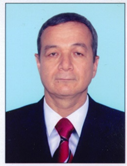
|
Sharipov Sadillo Olimjonovich
Google Scholar
Scopus.com
academic degree: -,
academic title: -,
position: Junior researcher,
speciality: Mathematics
room number: -,
phone: +99890 950 48 87,
email: sadi.sharipov@yahoo.com
The main scientific direction: -
|
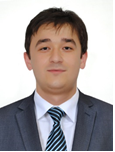
|
Farmonov Shokir Qosimovich
Google Scholar
Scopus.com
academic degree: DSc,
academic title: Professor,
position: Chief Researcher,
speciality: Mathematics
room number: 210,
phone: +99895 195 65 48,
email: shakirformanov@yandex.ru
The main scientific direction: -
|

|
Xusanboev Yoqubjon Muxammadjonovich
Google Scholar
Scopus.com
academic degree: DSc,
academic title: -,
position: Head of the department,
speciality: Mathematics
room number: 217,
phone: +99894 616 05 35,
email: yakubjank@mail.ru
The main scientific direction: -
|
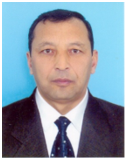
|
Miraxmedov Sherzad Adilovich
Google Scholar
Scopus.com
academic degree: DSc,
academic title: Professor,
position: Chief Researcher,
speciality: Mathematics
room number: -,
phone: +99894 602 60 16,
email: shmirakhmedov@yahoo.com
The main scientific direction: -
|

|
Ganikhodjaev Nosir Nabievich
Google Scholar
Scopus.com
academic degree: DSc,
academic title: Professor,
position: Chief Researcher,
speciality: Mathematics
room number: 315,
phone: +99897 122 18 48,
email: nasirgani@yandex.ru
The main scientific direction: -
|
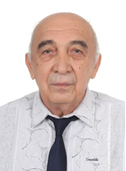
|
Sharaxmetov Shaturgun
Google Scholar
Scopus.com
academic degree: DSc,
academic title: Professor,
position: Leading researcher,
speciality: Mathematics
room number: -,
phone: +99890 936 96 69,
email: sh_sharakhmetov@mail.ru
The main scientific direction: -
|
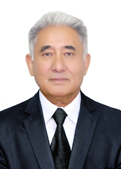
|
Raimova Gulnora Mirvaliyevna
Google Scholar
Scopus.com
academic degree: DSc,
academic title: Professor,
position: Leading researcher,
speciality: Mathematics
room number: -,
phone: +99891 190 37 69,
email: raimova27@gmail.com
The main scientific direction: -
|
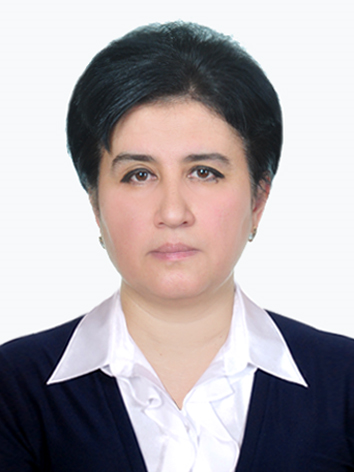
|
Xamdamov Isakjan Mamasaliyvich
Google Scholar
Scopus.com
academic degree: PhD,
academic title: -,
position: Senior researcher,
speciality: Mathematics
room number: -,
phone: +99894 661 85 89,
email: khamdamov.isakjan@gmail.com
The main scientific direction: -
|
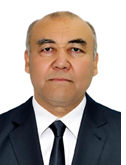
|
Bakoev Matyokub Teshayevich
Google Scholar
Scopus.com
academic degree: DSc,
academic title: Professor,
position: Leading researcher,
speciality: leading researcher
room number: -,
phone: +99890 959 36 18,
email: Matyokub.bakoev@gmail.com
The main scientific direction: -
|
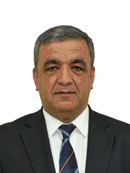
|
| Seminars |
|
Seminar Leader: Y.M. Xusanboev, Seminar secretary: S.O.Sharipov
The place of the seminar: Zoom online
The seminar is held every Monday from 11 a.m. to 12:00 a.m.
Seminar Leader: Y.M. Xusanboev, Seminar secretary: S.O.Sharipov
The place of the seminar: Zoom online
The seminar is held every Wednesday from 10 a.m. to 11 a.m.
Seminar Leader: Y.M. Xusanboev, Seminar secretary: S.O.Sharipov
The place of the seminar: Zoom online
The seminar is held every Friday from 10 a.m to 11 a.m.
|
History of the laboratory
In
1943 the Institute of Mathematics of the Academy of Science of the Republic of
Uzbekistan was established under which the future of mathematical statistics
and theory of possibilities (future director V.I. Romanovsky) was opened. The
laboratory has made a significant contribution to the development of
mathematics, special accounting theory and mathematical statistics in
Uzbekistan, to the growth of Uzbekistan's prestige in the world, to the
training of qualified personnel not only for the republic, but also abroad. A
great mathematician of the XX century academician V.I. Romanovsky (1879-1954)
takes a great part in the field of mathematics. He is a high-level
mathematician and one of the founders of the great pedagogical period and the
School of Mathematics of Uzbekistan.
The
laboratory staff has obtained many significant results in the theory of
probability and mathematical statistics, the theory of random processes. Limit
theorems and estimates for the sum of independent random variables, limit
theorems for Markov chains, limit theorems for random branching processes,
statistical methods of product quality control, public service theory,
asymptotic problems of statistical estimation theory, stationary random great
scientific results have been achieved in quantities, ergodic theory, stochastic
dynamic systems theory, random fields in statistical physics, quadratic
stochastic processes, and other areas. In the theory of Markov chains
academicians V.I. Romanovsky, T.A. Sarimsakov, S.H. Sirojiddinov and Sh.K.
Farmonov, in the theory of branching processes S.V. Nagaev, A.V. Nagayev, Sh.K.
Farmonov, R.E. Muhammedkhanova, I.S. Badalbaev and I. Rakhimov, discrete
problems of probability theory Sh.A. Mirakhmedov in the field of application,
M.A. Mirzakhmedov, Sh.A. Hoshimov and Sh.A. Mirakhmedov in the field of
parametric and non-parametric statistics, academician T.A. Azlarov in flat
estimates in limit theorems for public service systems, in functional spaces,
in particular Banax O.Sh.Sharipov in limit theorems for the sum of weakly
connected elements in space, A.A. Abdushukurov in the asymptotics of statistics
based on censored observations, in the theory of stationary random quantities,
ergodic theory and stochastic dynamic systems V.G. Vinokurov and N.N.
Ganikhodjayev. N.N. Ganikhodjayev and their students in the theory of random
fields and quadratic stochastic processes in statistical physics have achieved
high scientific results, which are recognized by experts.
From
1944 to 2021 in the department of probability theory and mathematical
statistics academicians V.I.
Romanovskiy, T.A. Sarimsoqov,
S.H. Sirojiddinov,
T.A. Azlarov,
Sh.Q. Farmonov,
professorlar S.V. Nagayev,
M.K. Kamolov,
M.I. Eydelnat,
T.L. Malevich,
V.G. Vinokurov,
A.V. Nagayev,
M.M. Mamatov,
B. Abdalimov, I.S.
Badalbayev, I. Raximov,
A. Startsev, Sh.
Xoshimov, Sh.A. Miraxmedov,
Sh. Shoraxmetov,
M.U. Gafurov,
N.N. Ganixodjayev
and many other well-known scientists have worked and continue to work. The
first graduate student of the institute was S.H. Sirojiddinov, a student of
V.I. Romanovsky. Later he served as a Vice President of the Academy of Science
for many years (1970-1983). He made a significant contribution to the
development of mathematics in Uzbekistan, especially to the probability theory
and mathematical statistics.
Department
of Probability Theory and Mathematical Statistics was lead by V.I. Romanovsky
(1949), by S.X. Sirojiddinov (1953-1954), by M.I. Eydelnant (1954-1960), by
R.X. Diveyev (1960-1967), by V.G. Vinokurov (1967-1972), by T.A. Azlarov
(1972-1976) and by Sh.K.Farmonov (2001-2018). In 1971 the Department of
Probability Theory and the Laboratory of Statistics of the Institute were
merged to form the Department of Probability Theory and Mathematical Statistics
(Head of the Department T.A. Azlarov). In 1976 on the basis of the Department
of Probability Theory and Mathematical Statistics were created 2 sections – “Probability
Theory” (head of the department Sh.K. Formanov) and “Mathematical Statistics”
(head of the department T.A. Azlarov).
The
Probability Theory Department was lead 1976-1990 by Sh.K. Formanov, 1991-1995
by I.S. Badalbaev, 1995-2001 by Sh.K. Formanov and the Mathematical Statistics
Department was lead 1976-1980 by T.A.Azlarov, 1980-1983 by S.X.Sirojiddinov,
1983-1988 by M.U.Gafurov, 1988-1994 by A.V.Nagaev, 1994-2001 by Sh.Hashimov. In
2001 the 2 departments - Probability Theory and Mathematical Statistics
departments were merged, and the new laboratory was headed by Sh.K. Formanov
from 2001 to 2018.
In
2020 the department was renamed as a Stochastic Analysis. Today the laboratory
is headed by Y.M.Khusanbaev.
Research directions
The
staff of the laboratory conducts research in the following areas:
-
Classical and non-classical variants of the central limit theorem for random
sums;
-
Limit theorems for random quantities and sequences of vectors;
-
Mathematical methods of statistical acceptance control of the finished product;
-
Random locations (probability methods of discrete mathematics);
-
The theory of asymptotic effectiveness of statistical symptoms;
-
Spacings-statistics, their application;
-
Limit theorems and their applications for weakly bound random variables that
take value in finite and infinite-dimensional spaces;
-
Limit theorems for weakly bound random fields that receive values in finite and
infinite-dimensional spaces, weak connection conditions for random fields;
-
Limit theorems and footsteps for U-statistics consisting of observations;
-
Evaluation of the parameters of autoregression processes, autoregression
processes with weakly linked innovation, autoregression processes in Banach
spaces;
-
Time series modeling;
-
Analysis of functional observations;
-
Inequalities for moments and probabilities;
-
Construction of the distribution function (copula function) of a random vector
with a given marginal distribution;
-
Asymptotics of the sum of conditionally independent random variables;
-
Limit theorems for Galton-Watson branching processes;
-
Functional limit theorems for immigrant branching random processes;
-
Analysis of branching random processes in a changing environment;
-
Monte Carlo method and its applications, mathematical models of risk
decision-making;
-
Limit Gibbs measurement theory for grid models of statistical physics;
-
Nonlinear dynamic systems and their applications;
-
Quadratic stochastic operators and processes;
-
Asymptotic analysis of extreme ordered statistics;
-
Limit theorems for convex coating functionals;
-
The theory of point processes.
The main results
1.
A generalized model of random placement of
particles in boxes (Generalized Urna Model) is introduced. . The results were
applied to a multinomial, finite set of nonlinear selection and the
Polya-Egenberger models.
2.
An algorithm for constructing an
asymptotic distribution for a selective aggregate distribution function
constructed by the non-return method from a finite set is presented. In the
two-step random sampling scheme of finite complex analysis, an asymptotic
distribution for student-selected sample mean values is established in
stratification and clustering designs.
3.
In the grouping method of observations, a
class of compatibility traits based on statistics, such as the sum of
group-frequency functions, was studied. In comparing symptoms belonging to this
class, the concept of Second Order Effectiveness based on the asymptotic power
of symptoms, as well as the concept of Intermediate Effectiveness, which is
considered between the two “extreme cases” Pitman and Bahadur asymptotic
effects approach. In terms of these effects, the problem of optimal symptoms is
solved.
4.
The unknown parameter of the distribution
includes the Generalized Spacings Estimators class, which is based on
high-order spacings-statistics and minimizes the line distance in various
convex functions. To
do this all
kinds of limit theorems for the approximation of the sum of the functions of
flat-spacing statistics by the normal distribution for the visible statistics
have been proved.
5.
Probable representations in the form of
mathematical expectations of random variables were obtained for nonlinear
problem solutions; random branching processes were constructed in accordance
with the probabilistic assumptions, their modeling formulas were determined,
the constructed processes were completed with a single probability, and the
number of generation dice was proved to be less than one; fixed values
in the process trajectory, shifted value in
low-branched process trajectories are constructed, the variance of the
constructed values is limited, the number of branches is defined and modeled in
limited process trajectories; the invariance of the values and the limitation
of the variances have been proved by the use of marking moments and martingale
theories.
6.
For boundary value problems in systems
random processes are constructed according to
probabilistic appearances, modeling formulas for process trajectories are
defined, and a modeling algorithm is given; the variance of the solutions of
the problems in the trajectories of random processes is constructed with
limited displacement and low displacement estimates.
7.
In Lebeg space, a series of continuously
growing dimensional fractions have been shown to be unique in the accuracy of
isomorphism.
8.
The problem of the existence of a limit
Gibbs distribution for several competing interactive models of statistical
physics with a finite set of cases is solved, the problem of having a limit
Gibbs distribution of more than one is solved.
9.
The concept of quadratic stochastic
processes was introduced and analytical methods for such processes were
developed. Delayed argument differential and integro-differential equations
describing such processes are derived.
10.
In the theory of nonlinear dynamic
systems the quadratic
stochastic operators have been constructed and studied that describe a
mathematical model of the transfer of blood group and rhesus factor from
parents to children. The ergodic problem is solved for a wide class of
quadratic stochastic operators. A method for constructing
the quadratic stochastic operators with a set
of genotypes that are numerical and continuous has been proposed, and the
problem of ergodicity for the separation of such operators has been solved.
11.
Functional limit theorems have been proved
for branching random processes involving the flow of random quantities
associated with immigration.
12.
For the moments of branching random
processes the
values are set from above using single particle moments and immigration
moments.
Awards
In
1973 S.H.Sirojiddinov,
T.A.Azlarov,
Sh.K.Formanov and M.M.Mamatov
were awarded with
the Beruni State Prize of Uzbekistan for their research in the field of “Limit
theorems of probability theory and their applications”.
In
1977 young
prospect M.U.Gafurov, Sh.A.Mirakhmedov,
Sh.A.Hoshimov and Sh.A.Ismatullayev
were awarded with the
Prize of Uzbekistan in the field of science and technology for young
scientists.
International relations
The laboratory actively cooperates with many foreign
institutes and universities, including:
- V.A.Steklov Institute of Mathematics (Moscow,
Russia);
- V.A.Steklov Petersburg branch of the Steklov Institute
of Mathematics;
- S.L.Sobolev Institute of Mathematics (Novosibirsk,
Russia);
- M.V.Lomonosov Moscow State University (Moscow,
Russia);
- University of Bochum (Bochum, Germany)
- Kiev National University named after Taras
Shevchenko (Kiev, Ukraine);
- University of Copenhagen (Copenhagen, Denmark);
- Stanford University (California, USA);
- Putra University (Kuala Lumpur, Malaysia);
- University of Magdeburg (Magdeburg, Germany);
- University of Debrecen (Debrecen, Hungary);
- Institute of Mathematics of the Ukrainian Academy of
Science (Kiev, Ukraine);
- Russian Humanities University (Moscow, Russia).
|
|
|



